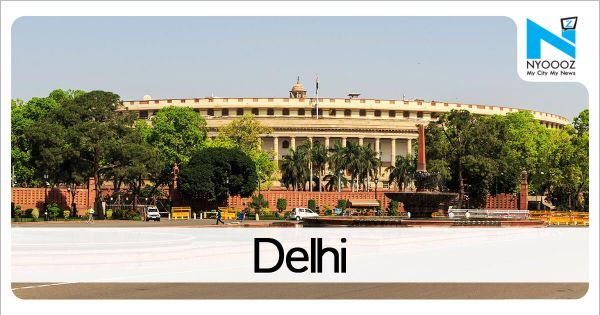Oct-Nov period least polluted in Delhi in eight years: CSE
- | Monday | 12th December, 2022

New Delhi, Dec 12 (PTI) The period from October to November was the least polluted in the last eight years in Delhi and there has been no severe smog episode during the winter season so far, according to green think tank Centre for Science and Environment."Diwali in a warmer October, lower incidents of crop fires, pre-emptive action based on pollution forecasting, and favourable meteorological conditions including extended rainfall in October, have all contributed towards bending of the early winter pollution curve," said Anumita Roychowdhury, executive director, research and advocacy, CSE.But there may be more spikes later as has usually been observed in previous years. Stronger pre-emptive measures and deeper round-the-year action on local sources is needed to bring down the winter pollution to satisfactory levels, she said.The CSE analysis is based on real-time data available from functional air quality monitoring stations in Delhi-NCR. There are 81 continuous ambient air quality monitoring stations (CAAQMS) spread across the region.The analysis showed that average PM2.5 levels across 37 functional CAAQMS stations in Delhi stood at 142 micrograms per cubic metre (µg/m3) for the months of October and November.This is the lowest level recorded since the city installed these stations in 2018."If data for the 10 oldest stations (working since 2014-15) is referred to, October-November of this year remains the least polluted in comparison," the CSE said.The PM2.5 level this October-November has been 38 per cent lower as compared to October-November of 2016, which was the worst in the last eight years.Ghaziabad"s October-November average PM2.5 this year is 36 per cent lower than the same period in 2020. Similarly, Greater Noida and Faridabad registered improvements of 28 per cent and 22 per cent, respectively. This is higher than Delhi"s city-wide improvement of 19 per cent in the same time frame.Gurugram showed the least improvement with a mere 15 per cent change.Noida"s October-November average PM2.5 this year appears to be 40 per cent lower than the same period in 2020.However, it may be noted that one of Noida"s CAAQM stations is reporting uncharacteristically low values this season. This needs to be examined, the CSE said.Delhi was the most polluted major city in NCR with an October-November average of 142 µg/m3, followed by Gurugram (134 µg/m3) and Ghaziabad (131 µg/m3).The CSE analysis also showed that there has been no severe smog episode so far during this season. This makes the October-November period the first in the last five years to be smog-free.It is considered a severe smog episode when the air quality index remains in the "severe" category for at least three consecutive days.There is usually one smog episode during October-November lasting six-ten days.During the winter of 2021, there were three smog episodes – two in November and one in December. November 2021 had recorded the longest smog episode of 10 continuous days (4-13 November). Such events have not occurred this winter.Farm fires this year were about half of the previous year. The total count of farm fires reported this year from Punjab, Haryana and Delhi in the months of October and November stood at 54,391, according to NASA"s VIIRS satellite and 11,824 according to NASA"s MODIS satellite.These are respectively 37 per cent and 42 per cent lower than the figures for October-November of 2021.Analysis of SAFAR data shows that this year, smoke from the farm fires contributed to PM2.5 levels in Delhi on 53 days, starting October 12 and ending on December 3. This is less than the last three years, when smoke intrusion was reported on 56 days but higher than the 2018 figure of 48 days. The highest contribution this year was 34 per cent, reported on November 3.The smoke from farm fires that covers Delhi is dependent on two major factors: number and intensity of the fires, and meteorological conditions conducive for transportation of the smoke to Delhi.This October-November, not only the number and intensity of farm stubble fires have been comparatively lower but also the meteorological conditions have been less conducive for the transport of smoke.As a result, considerably lesser smoke invaded Delhi.The CSE estimated that smoke contributed about 4.1 tonnes of PM2.5 during October-November in Delhi. This is 37 per cent lesser than the 6.4 tonnes that came last year, and also almost half of the 2020 figure.High rainfall and local wind speed helped disperse local pollution.Delhi received 115 mm of rainfall this October-November, the highest in the last five years. This helped clean up the city air, especially in October.Average wind speed for November stood at 12.4 km/hour which helped in dispersing local pollution. Average wind speed for the month in 2021 was 11 km/hour and 11.5 km/hour in 2020. PTI GVS DIV DIV

If You Like This Story, Support NYOOOZ
Your support to NYOOOZ will help us to continue create and publish news for and from smaller cities, which also need equal voice as much as citizens living in bigger cities have through mainstream media organizations.
Stay updated with all the Delhi Latest News headlines here. For more exclusive & live news updates from all around India, stay connected with NYOOOZ.










